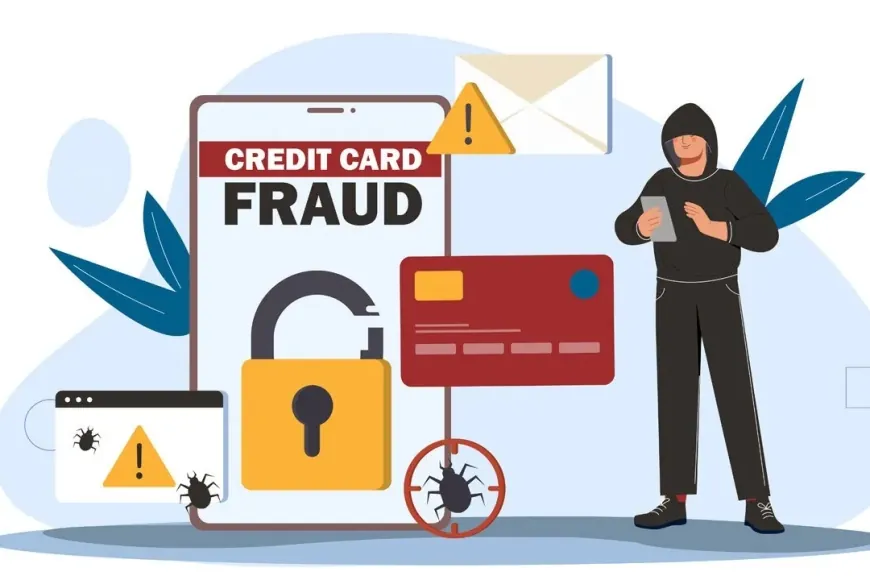
Credit card usage is woven into the fabric of American life. From grocery shopping to online purchases, Americans rely on cards for convenience and financial management. Yet, with convenience comes risk. Industry estimates suggest U.S. consumers lost over $12.5 billion to credit card fraud in 2024, a 25% increase from the previous year.
Fraud in the U.S. spans physical and digital channels, with criminals exploiting vulnerabilities in infrastructure, consumer habits, and institutional systems. Certain environments—like ATMs, gas stations, and airports—present a particularly high risk. Understanding these spaces is essential for minimizing exposure and safeguarding personal finances.
1. ATMs:
ATMs are a common financial access point but also a hotspot for credit card fraud. Criminals attach concealed skimming devices to capture card information and PINs. Recent adaptations, such as shimming devices, can even compromise EMV chip cards.
High-risk ATMs:
-
Standalone machines in parking lots or isolated streets.
-
Machines with poor lighting or minimal surveillance.
Consumers can reduce risk by:
-
Inspecting card readers before use.
-
Shielding PIN entry.
-
Preferring ATMs inside banks or high-traffic areas.
“Even with EMV chip cards, criminals continue to innovate, making vigilance essential at ATMs,” financial analysts warn.
2. Gas Stations:
Gas stations are ideal targets for skimming devices due to:
-
High transaction volumes.
-
Unattended pumps.
-
Delayed EMV chip adoption.
Criminals often pair skimmers with hidden cameras to capture PINs and card data simultaneously. Highway stations and smaller chains are particularly vulnerable.
Consumer tip: Pay inside when possible and monitor statements closely for unusual charges.
Quick inspections and paying at the cashier can prevent costly surprises.
3. Mobile Vendors:
Food trucks, festival booths, and other pop-ups offer convenience but may lack robust security measures. Fraudsters can use handheld devices to capture card data without consumers’ knowledge.
-
High foot traffic environments increase opportunities for fraud.
-
Lack of oversight allows scams to persist undetected.
Best practices: Use digital wallets, avoid unknown vendors, and carry limited cash.
Mobile vendors provide convenience, but consumers must weigh risk versus speed.
4. Restaurants and Cafés:
U.S. dining culture often involves handing the card to a server or processing it away from the table. This creates a vulnerability for internal or digital fraud.
-
Some establishments still rely on back-office processing instead of table-side EMV devices.
-
Reports of unauthorized online charges from restaurant swipes highlight the risk.
Consumer guidance:
-
Monitor statements regularly.
-
Opt for contactless payments when possible.
-
Choose restaurants with visible, secure processing.
Even familiar establishments are not immune; vigilance is essential.
5. Big-Box Retailers:
Large U.S. retailers handle millions of transactions daily, making them attractive for cybercriminals. Breaches can expose vast amounts of customer data in a single attack.
-
Supply chain complexity and third-party vendors increase vulnerabilities.
-
Consumers often assume major retailers are fully secure, which is not always true.
Mitigation strategies:
-
Monitor accounts and set up transaction alerts.
-
Use credit cards rather than debit cards for stronger legal protections.
High transaction volumes make detection difficult, emphasizing the need for consumer awareness.
6. E-Commerce:
Online shopping presents a convenient but risky environment. Card-not-present fraud exploits:
-
Fake websites.
-
Phishing scams.
-
Vulnerabilities in payment platforms.
Fraud spikes during seasonal shopping periods, including Black Friday and holidays.
Protective measures:
-
Shop on trusted websites.
-
Enable two-factor authentication.
-
Avoid saving card information on multiple platforms.
The convenience of online shopping comes with a growing digital threat.
7. Hotels:
Hotels process numerous transactions and often store guest card data for incidentals or repeat bookings. Vulnerabilities include:
-
Outdated reservation systems.
-
Employee misuse of card data.
-
Third-party booking platform exposure.
Business travelers are particularly at risk due to repeated stays and high-volume transactions.
Consumer advice:
-
Use credit cards with fraud protection.
-
Limit data sharing with third-party platforms.
-
Monitor statements post-travel.
Even temporary stays carry financial risk if systems are compromised.
8. Airports and Transit Terminals:
Airports and transit hubs involve multiple card interactions, including:
-
Self-service kiosks.
-
Unattended vendors.
-
Public Wi-Fi networks.
Travelers are often distracted, making them vulnerable to scams like tampered kiosks or fake Wi-Fi networks.
Safety tips:
-
Use staffed counters when possible.
-
Avoid unsecured Wi-Fi networks.
-
Stay alert during transactions.
High traffic, multiple touchpoints, and traveler distraction make airports uniquely risky for card use.
Protecting Your Credit Card in High-Risk Locations
Credit card fraud doesn’t happen in theory—it happens in the places you use your card every day. ATMs, gas stations, restaurants, mobile vendors, online stores, hotels, big-box retailers, and airports all present different types of risk. Understanding exactly what to do in each scenario makes a measurable difference.
Smart Tips:
-
ATMs: Only use machines inside banks or well-lit areas. Inspect the card reader for unusual attachments or loose parts before inserting your card.
-
Gas Stations: If the pump looks tampered with or has broken seals, pay inside instead. Avoid unattended pumps.
-
Restaurants & Mobile Vendors: When possible, watch your card being processed or use contactless payments.
-
Online Shopping: Limit the number of sites that store your card details. Use secure networks and enable two-factor authentication.
-
Hotels & Big-Box Stores: Ask if card details are stored; request temporary authorization for incidentals rather than leaving your card on file.
-
Airports & Transit: Use staffed counters or official kiosks rather than self-service machines in isolated areas.
These steps are specific to each high-risk location, giving readers concrete actions rather than vague warnings. By taking these measures consistently, cardholders can prevent fraudulent charges before they happen and avoid the headaches of compromised accounts.
Also Read: Stablecoins Could Replace Credit Cards and Bank Accounts




